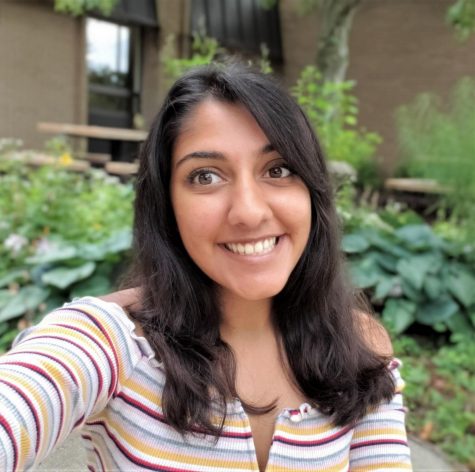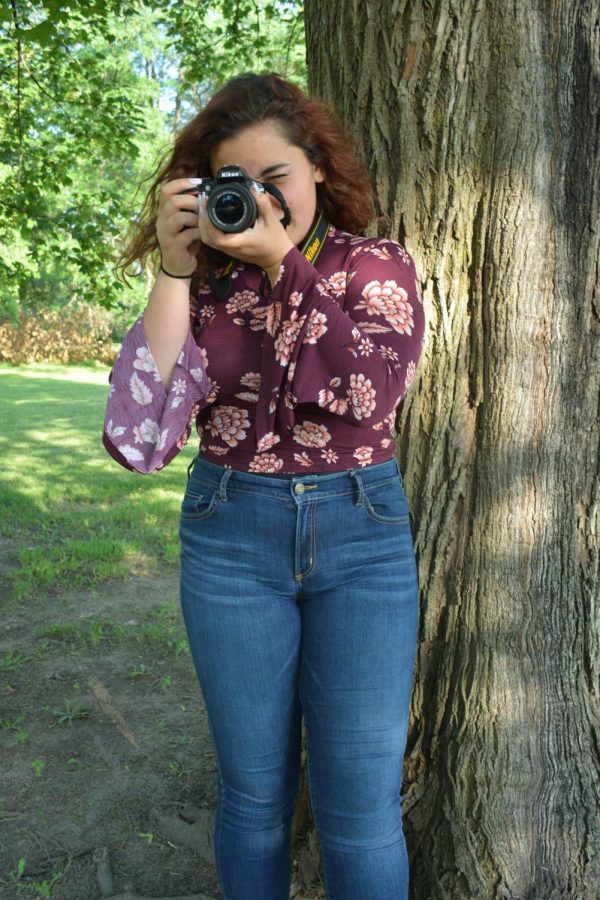Inspiration through aspiration
how viewing artwork has inspired creation in the Literary Magazine
Photo by Olivia Norman
Gillian Teichman’s passion for photography has been around for as long as she can recall. She is also a member of the Literary Magazine, which puts together a publication of the best artwork that students submit.
Whether it be the click of a camera, the stroke of paint brush, or the flow of a pen’s ink, student’s art and writing can tell important stories, and thanks to the Literary Magazine, these student creators have a place for art enthusiasts to decipher that story.
“The club meets once a week and we have people from the school, who submit photography, drawings, short stories that they have written, a lot of narration stuff, nonfiction, fiction, and poetry. We go through and we pick the ones that we like the best and we put them in a magazine that we create at the end of the year.” Gillian Teichman, junior Literary Magazine member said.
The Literary Magazine serves as a chance to be published and according to Jack Labelle, the sponsor of the club a sense of validation for the hard work students put in.
“It’s a validation of the work they are doing and it says, ‘hey, the thing that you thought was nothing is something,” Labelle said. “I hope it’s an encouragement to people who are artists and writers to keep doing what they’re doing and keep trying to get better and explore new things because maybe one day you’ll be published on a bigger scale.”
The club takes the submissions and discusses the work anonymously, so there is no bias if there happens to be a member of the club who also submitted a piece of art. The work is judged based on different criteria and publishes the art pieces they feel are the best in their literary magazine.
“We talk about work that is unique and maybe a unique message or takes a new approach to a topic that is interesting to people; a story or poem that is particularly engaging, or seems like it would be appealing to readers; things that are aesthetically pleasing, like poetry, that uses words in an interesting way and you look at it and go, ‘oh wow. How do they do that?’ So it’s not a scientific process because you never know what will be submitted,” Labelle said.
According to Labelle, one does not need experience to judge a piece of art. All that a member of the club needs is an opinion.
“I think [the students in the club] are experienced enough because I think anyone who takes an interest in art or literature is experienced enough to talk about how effective, interesting, or unique it is. Even if you’re a freshman and you’ve read a few stories in your life, you still have an opinion, so I think anybody who comes in has a point of view that is worth sharing,” Labelle said.
For Teichman, art has always been of interest and analyzing the weaknesses and strengths of submissions, by other students for the the literary magazine, serves as an inspiration for her to create new work.
“Being a photographer myself, I just love seeing other people’s work and what inspires people, and I get ideas and I love seeing what comes our way,” Teichman said. “You get a mood from people’s pieces, and a lot of times that mood really inspires you to do other things. Like I’ve seen a poem and think, ‘oh I can take that and change it into a photo’ and [for others the same artwork can] inspire [them] to write.”
Teichman can channel the mood she gets from an art piece into photography, a mode of art that has been a passion for her as long as she can remember.
“I’ve always had a camera in front of me. I’ve been taking photos since I was 6 or 7 years old, and freshman year I took an art foundations class. I hated drawing, I hated ceramics, and painting; it wasn’t easy and nothing ever flowed,” Teichman said. “Then I took a photo class, and I was like, ‘wow! This is something I want to do’ because it was something I actually excelled at.”
The love for photography that Teichman has stems from the idea that one can show an emotion in a creative manner through a moment in time.
“I love the idea that you can create a story without any words. I like how art makes you feel something, and you’re not quite sure what you’re feeling, but you’re definitely feeling something,” Teichman said. “My art is a lot of surrealism that creeps people out, like I had a tree growing out of the veins in my arms because I thought the veins looked like roots and I like to intertwine nature and humans, and being able to show a connection that you can see and nobody else can is amazing.”
Similar to Teichman’s pull towards creating artwork through photography, Labelle’s passion for creating through writing started as far back as he could remember.
“It’s something that as far back as I can remember, I can remember enjoying it. In second grade I tried writing a script for a tv show about my life. I mean, it was like three pages, but I was still doing it,” Labelle said. “As I got older and went into high school, every writing assignment that I got, whether it be a personal essay or a literary analysis, I took it as a challenge or an exciting project to try to create something new, so I think it is the opportunity to say something unique.”
Labelle decided to sponsor the club to inspire students who are passionate about writing and art.
“I thought it would be good for me to use my experience to encourage students here if they want to be writer or artists, or even if they are just creating for fun, so I think it was a nice way of me to contribute to the student population,” Labelle said. “It is encouraging because I’ll go through weeks or months where I don’t do stuff, but then I see these kids and say ‘if they can do it I can do it’ and it’s a reminder that it’s worth taking the time to create something.”

After being in the journalism program for three years, Parul will be starting this year as a senior! Outside of the journalism lab, you can find her playing...

